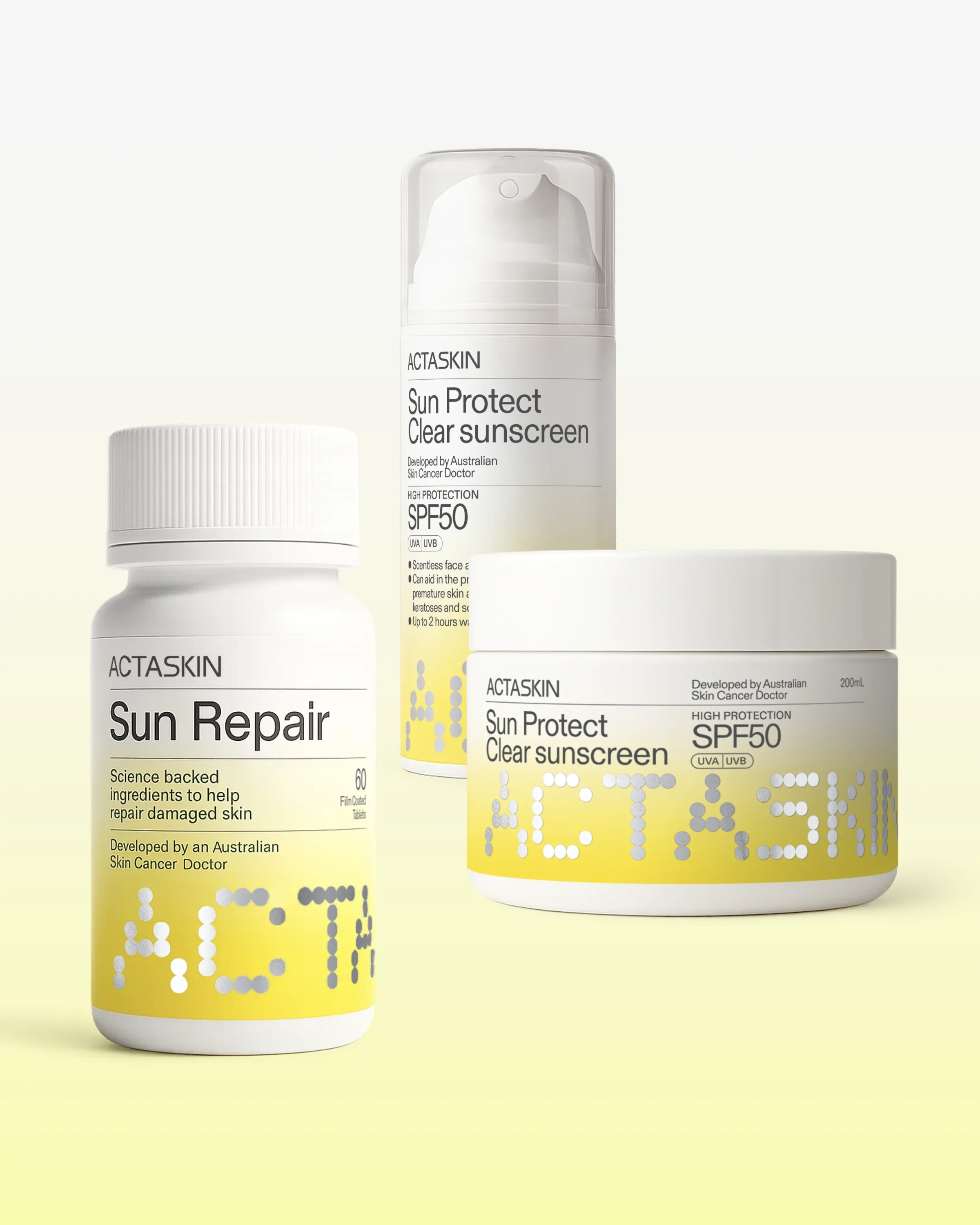If you’ve looked into supplements lately, you’ve probably come across the buzzword NAD⁺.
NAD⁺ - short for nicotinamide adenine dinucleotide - is a molecule your body depends on for energy production, cellular repair, and healthy skin function. It plays a key role in how efficiently your skin cells recover from daily environmental stress, including UV exposure.
But here’s where things get confusing: several forms of vitamin B3 claim to increase NAD⁺ levels, yet they don’t all deliver the same outcomes.
Let’s break it down.
Nicotinamide Riboside (NR)
Often marketed as an “anti-ageing” molecule, NR can increase NAD⁺ levels in cells. Early research is promising in areas like metabolism and energy, but human studies on skin health are still limited.
In short, it’s interesting, but unproven when it comes to visible skin outcomes.
Nicotinamide Mononucleotide (NMN)
NMN is another compound your body can use to make NAD⁺. It’s gained huge popularity in longevity circles and early-stage lab studies show potential. However, there are no published human trials confirming its specific benefits for skin health or UV-related damage.
Nicotinamide (NAM)
Nicotinamide - also known as niacinamide when used in skincare - is the simplest, most established form of vitamin B3.
Unlike NR or NMN, nicotinamide has been extensively studied in humans. It’s shown to support skin barrier function, hydration, and visible skin renewal, particularly in sun-exposed skin.
Put simply, nicotinamide is the only form of B3 with gold-standard clinical evidence supporting its benefits for skin resilience and healthy cellular energy.
The bottom line on NAD⁺
All three forms - NR, NMN, and NAM - eventually convert into NAD⁺ inside the body.
That much is true. But boosting NAD⁺ is only half the story. The real question is: does it work where it matters most?
So far, nicotinamide (NAM) is the clear standout. It’s clinically studied, well-tolerated, and proven to restore NAD⁺ through safe, effective pathways that benefit the skin.
Why Actaskin chose Nicotinamide
This is why Actaskin’s Sun Repair is built on Nicotinamide, not NR, not NMN.
Because when it comes to supporting healthy skin exposed to the sun, the science points in one clear direction.
At Actaskin, we don’t follow hype. We follow evidence.
About Dr. Austin Lang
Dr. Austin Lang MBBS, BSc, FRACGP, MMed (Skin Cancer) is a Brisbane-based skin cancer expert practicing at Brisbane Skin Cancer in Coorparoo. He has performed more than 3,000 procedures and is highly trained in advanced reconstructive surgery, scar optimisation, and minimally invasive techniques. Austin combines world-class expertise with a patient-first approach to achieve the best outcomes for his patients.
References
-
Chen, A. C., Martin, A. J., Choy, B., Fernández-Peñas, P., Dalziell, R. A., McKenzie, C. A., Scolyer, R. A., Dhillon, H. M., Vardy, J. L., Kricker, A., St. George, G., Chinniah, N., Halliday, G. M., & Damian, D. L. (2015). A Phase 3 Randomized Trial of Nicotinamide for Skin-Cancer Chemoprevention. New England Journal of Medicine, 373(17), 1618–1626.
-
Rajman, L., Chwalek, K., & Sinclair, D. A. (2018). Therapeutic potential of NAD-boosting molecules: the in vivo evidence. Cell Metabolism, 27(3), 529–547.
-
Grill, J. D., & Rajagopal, A. (2022). Nicotinamide Riboside and Nicotinamide Mononucleotide: Human Clinical Trials and Safety Data. Frontiers in Aging, 3, 820997.
-
Knip, M., & Douek, I. F. (2000). Safety of high-dose nicotinamide: a review. Diabetologia, 43(11), 1337–1345.
-
Jacobson, E. L., & Jacobson, M. K. (1997). Nicotinamide and Dermal Health: A Review of its Biochemical Roles and Clinical Uses. Journal of Cosmetic Dermatology, 16(3), 159–167.



